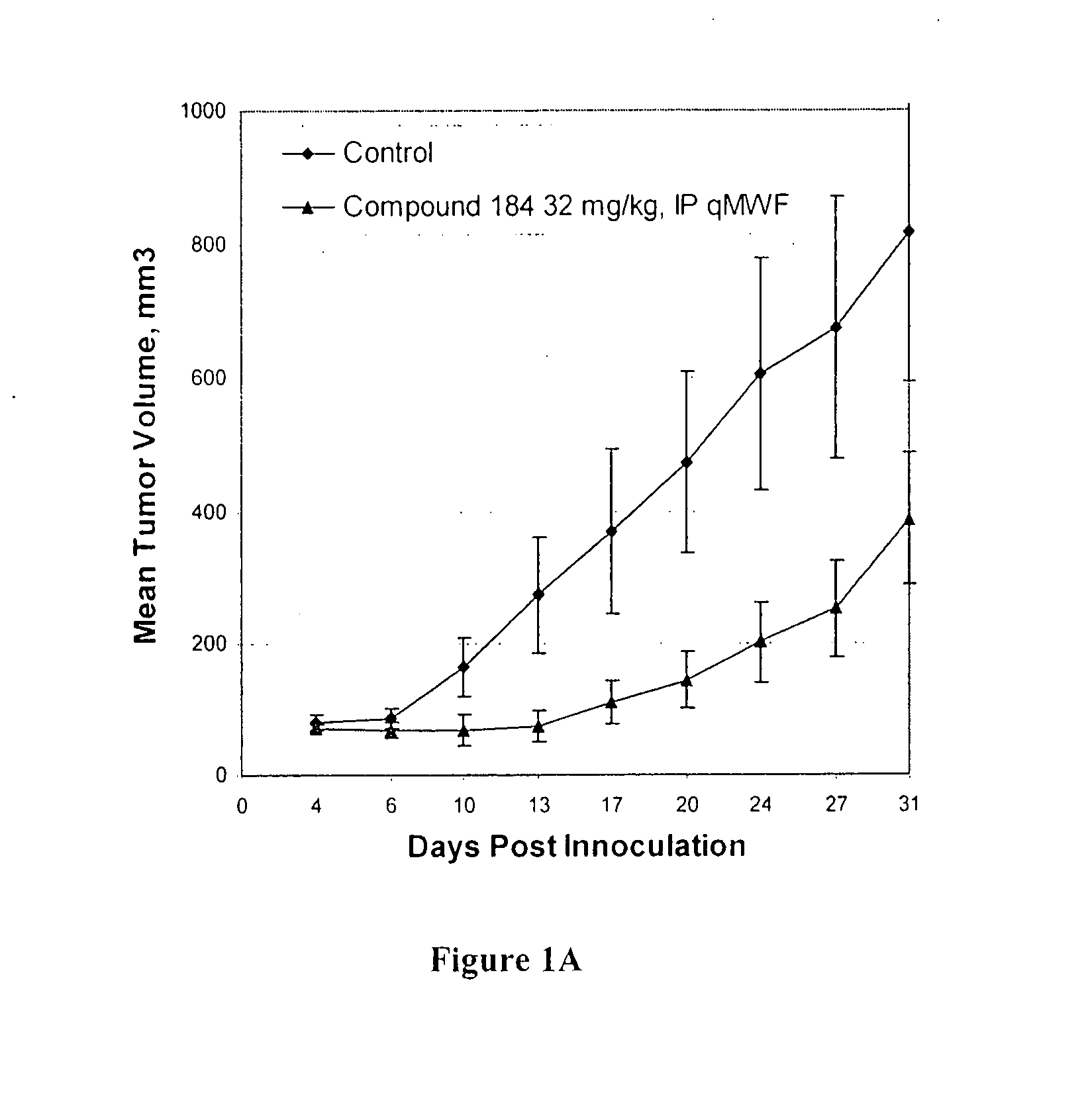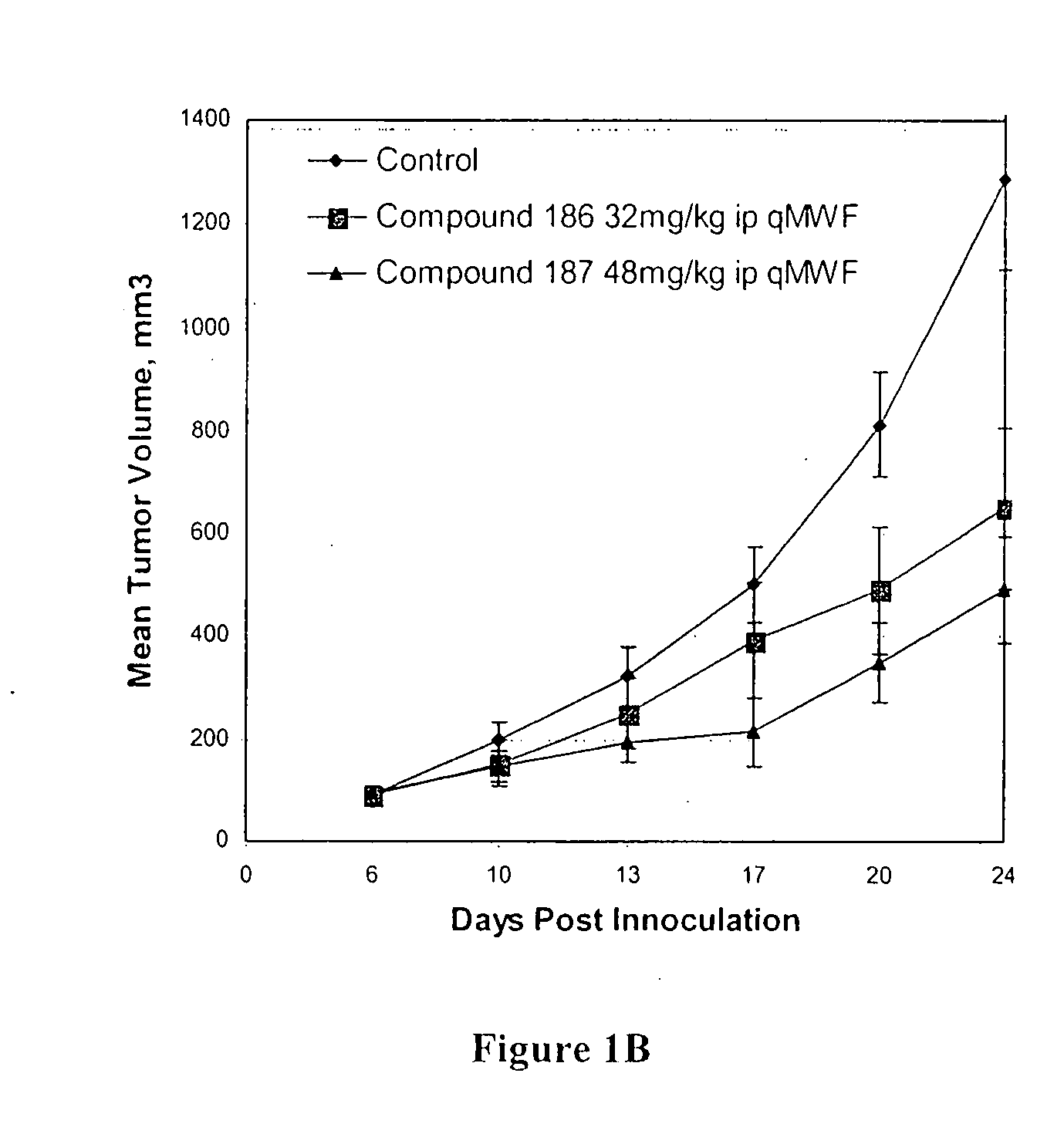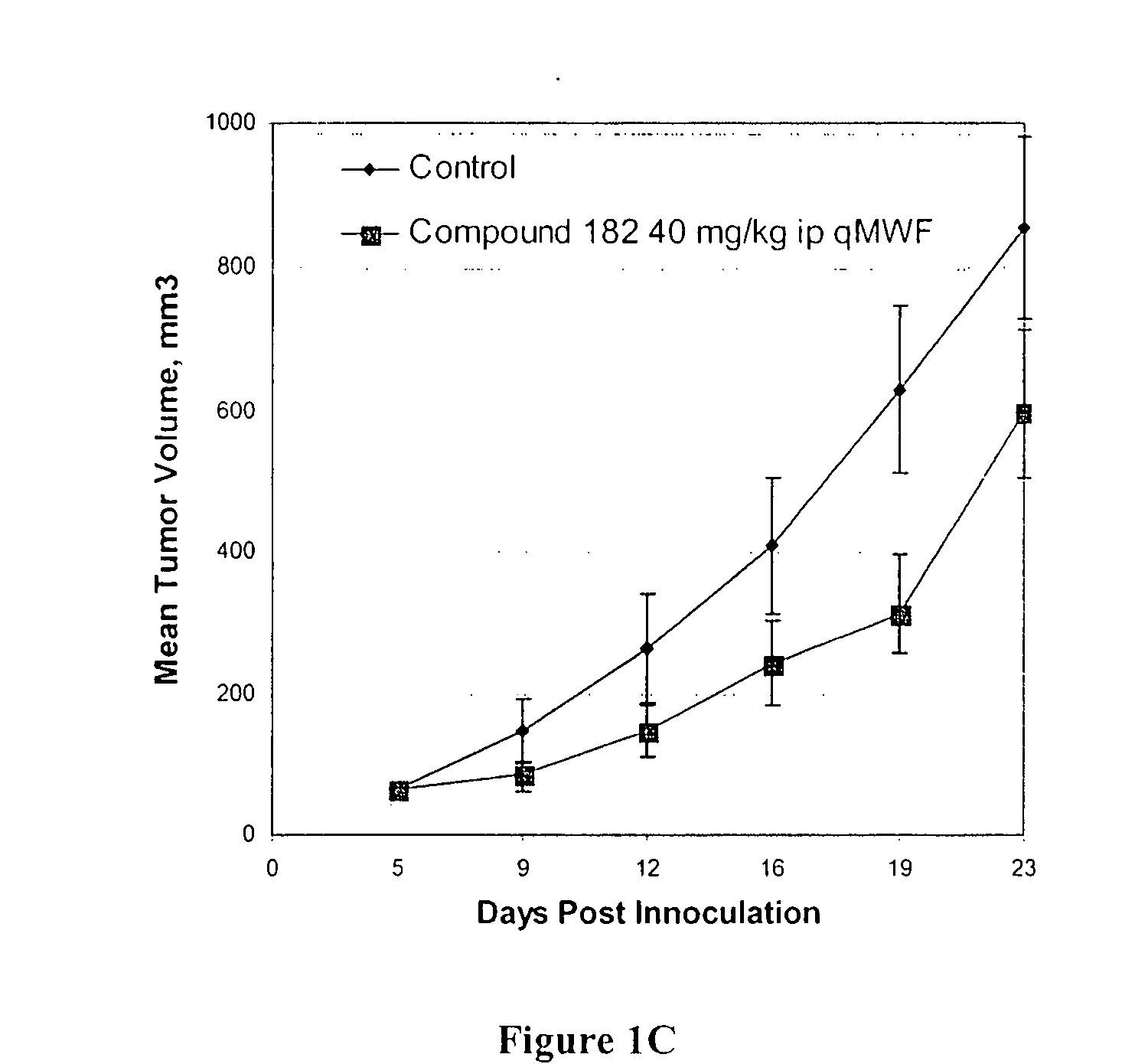Novel lapachone compounds and methods of use thereof
a technology of lapachone and compounds, applied in the field of lapachone compounds, can solve the problems of pre-cancer cell death and selective cell death in cancer and other directions
- Summary
- Abstract
- Description
- Claims
- Application Information
AI Technical Summary
Benefits of technology
Problems solved by technology
Method used
Image
Examples
example 1
Procedure A
[0268]
E1.1. Synthesis of tert-butyl 1-oxa-6-azaspiro[2.5]octane-6-carboxylate (Compound 1)
[0269]
[0270]A mixture of trimethylsulfoxonium iodide (65.2 g, 29.6 mmol) and anhydrous DMSO (300 ml) was stirred at room temperature for 1 hour under a nitrogen atmosphere. The reaction was then cooled to 0° C. and NaH (60% in mineral oil) (14.2 g, 35.5 mmol) was added in small portions over the course of 1 hour. The reaction mixture was allowed to warn to room temperature and stirred for 4 hours. The reaction mixture was then cooled to 0° C., tert-butyl 4-oxo-1-piperidinecarboxylate (59.0 g, 29.6 mmol) added, then allowed to react at room temperature for 16 hours. The reaction mixture was then poured onto 1.2 liters of ice water and extracted with ether (4×400 ml). The organic layers were washed with water (2×500 ml) and brine (2×500 ml). The organic extract was dried with Na2SO4 and concentrated under reduced pressure. The crude product was purified by flash column chromatography (...
example 2
Procedure B
[0275]
E2.1. Synthesis of tert-butyl 4-hydroxy-4-(mercaptomethyl)piperidine-1-carboxylate (Compound 4)
[0276]
[0277]To a mixture of tert-butyl 1-oxa-6-azaspiro[2.5]octane-6-carboxylate (35.3 g, 16.55 mmol) and triphenylsilanethiol (48.4 g, 16.55 mmol) in anhydrous methanol (1.0 L) was added triethylamine (23.1 ml, 16.55 mmol) drop-wise over the course of 30 minutes. The reaction was stirred for 1 hour at room temperature and the methanol was evaporated under reduced pressure. The crude product was purified by flash column chromatography (SiO2, 5% EtOAc in hexanes to 40% EtOAc in hexanes) to afford 81% (33.1 g) pure final product. M.p.=54-55° C.; 400 MHz 1H NMR (CDCl3) δ: 3.97-3.78 (m, 2H), 3.19-3.08 (m, 2H), 2.61 (d, J=4.4 Hz, 2H), 1.70-1.55 (m, 2H), 1.50-1.38 (m, 11H); LCMS: 248 [M+H].
example 3
Procedure C
[0278]
E3.1. Synthesis of tert-butyl 4-hydroxy-4-(mercaptomethyl)piperidine-1-carboxylate (Compound 4)
[0279]
[0280]Sodium sulfide nonahydrate (60 g, 0.25 mol) was dissolved in MeOH (1.25 L), and the resulting solution was degassed by applying vacuum and filling nitrogen three times. The solution was then cooled to 0° C. with an ice-water bath. To the above solution was added p-toluenesulfonic acid hydrate (76 g, 0.4 mol) and the resulting mixture was stirred at 0° C. for 10 min. A yellowish colored solution was formed. The tert-butyl 1-oxa-6-azaspiro[2.5]octane-6-carboxylate (21.2 g, 0.1 mol) was added to the reaction mixture and stirred at 0° C. for 1 h and then at room temperature for 1.5 h. Saturated sodium bicarbonate solution (200 mL) was added to the reaction, and the methanol was evaporated under reduced pressure. To the residue was added water (500 mL) and extracted with EtOAc (1×400 mL and 2×250 mL), the combined organic layer was washed with brine (250 mL) and dri...
PUM
| Property | Measurement | Unit |
|---|---|---|
| Electrical conductance | aaaaa | aaaaa |
| Molar density | aaaaa | aaaaa |
| Molar density | aaaaa | aaaaa |
Abstract
Description
Claims
Application Information
 Login to View More
Login to View More - R&D
- Intellectual Property
- Life Sciences
- Materials
- Tech Scout
- Unparalleled Data Quality
- Higher Quality Content
- 60% Fewer Hallucinations
Browse by: Latest US Patents, China's latest patents, Technical Efficacy Thesaurus, Application Domain, Technology Topic, Popular Technical Reports.
© 2025 PatSnap. All rights reserved.Legal|Privacy policy|Modern Slavery Act Transparency Statement|Sitemap|About US| Contact US: help@patsnap.com



